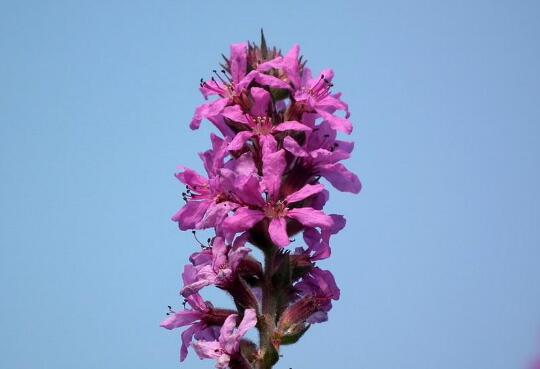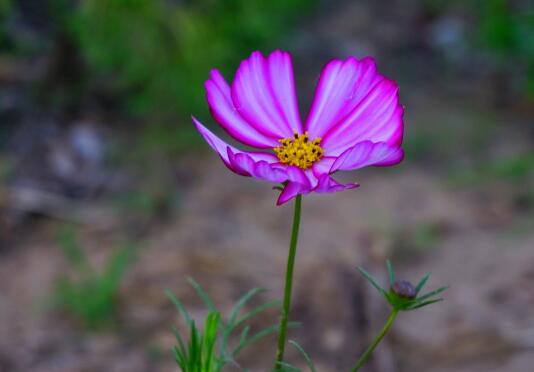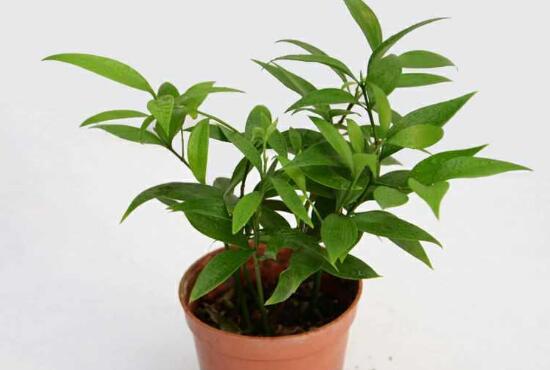Is Qianqu poisonous? can Qianchi be raised indoors / non-toxic can be cultivated indoors
Qianchi is a world-famous flower plant, which has high ornamental value, and because of this, many people want to raise it at home, but now many plants on the market are toxic to a certain extent, so we need to find out before breeding, is it poisonous? Can I keep Chichu indoors? Next, the editor will take you to learn about it.
Is it poisonous or non-toxic?

On the question of whether it is poisonous or not, the answer is no. This plant itself is non-toxic, and not only that, it also has high medicinal value. In medicine, all its herbs can be used as medicine. As for its specific medicinal methods in the efficacy and role of Qianqu, there is a detailed introduction, interested friends can learn about it.
Can Qianqu vegetables be kept indoors?
This kind of plant, whether planted outdoors or potted indoors, is very suitable. If raised outdoors, it can refresh the natural environment, and at the same time, it also has many advantages. However, this kind of plant needs light when it grows, so if we want to keep it indoors, it is best to keep it on the windowsill, so that it can receive light and grow better.
Third, the advantages of keeping Qianqu vegetables indoors
1. Beautify the indoor environment
Qianchi is a kind of plant with high ornamental value. the flowers of this plant are luxuriant, towering and beautiful, and the pink flowers give people a fresh and playful feeling, so it is loved by many women. if we raise a plant at home, it will also have a very good beautification effect on the indoor environment.
two。 Purify indoor air
The leaves of Chiqu are rich in chlorophyll, which usually depends on it to absorb nutrients and grow. During photosynthesis, it can also absorb harmful substances in the air and convert them into oxygen, thus making the surrounding air cleaner. If we raise a plant at home, it can also greatly improve people's living environment.
3. Edible as a wild vegetable
In addition to the above points, the tender stems and leaves of this plant can also be eaten as wild vegetables, which has a very long history in our country, and not only that, this plant also contains iron and other ingredients, which has the effect of clearing away heat and cooling blood. it can be said to be a necessary vegetable in hot summer, and we can often taste it if we raise it at home.
How to raise Qianchi, the breeding methods and precautions / sunshine should be sufficient.
It can be seen in Asia, Europe, Africa and other regions, but it is not easy to raise it well, and there are many places that need to pay attention to. About how to raise Chiqu vegetables? What are the breeding methods and matters needing attention of Qianqu? Next, the editor will take you to learn about it.
First, how to raise Qianqu vegetables and understand their habits
If you want to know how to raise Chikki, first of all, we need to understand its growth habits. This plant likes a sunny environment and is relatively hardy. It can be said that its survival ability is very strong, but it wants to make it grow better. Then daily water and fertilizer management cannot be careless. Specific maintenance techniques are described in detail below. Let's take a look at that.
2. Culture methods and matters needing attention of Qianqingcai
1. Humus soil
We first need to choose soil before raising Chiqu, which is a step to lay a good foundation and is very important. generally speaking, it is best to choose loose and fertile humus soil, which is rich in organic matter. and drainage and air permeability are better, can make the plant grow better.
two。 Fertilize, once a month
Fertilizer is one of the main nutrients in the growth process, especially after entering the growth period, its demand for fertilizer is very large, basically every other month to apply fertilizer. However, there is one thing we should pay attention to when applying fertilizer, that is, the fertilizer must be diluted with water first. If the concentration is too high, it will burn the plant.
3. Moisture, avoid stagnant water
Watering is an indispensable link in the growth process of a plant, and Chichu is no exception. When we breed it, we should water it frequently to keep the soil moist, so that it can grow better. However, we need to pay attention to the control of watering. This kind of plant is not resistant to waterlogging, if it causes stagnant water, it is easy to cause its roots to rot.
4. Sunshine, sunshine should be sufficient.
This kind of plant prefers sunny environment, the stronger the light, the better it will grow, because in this way it can better carry out photosynthesis. Therefore, when we breed it, it is best not to put it in the shade, otherwise it will affect its growth, and in serious cases, it will lead to plant atrophy and death.
5. Timely prevention and control of diseases and insect pests
When we breed Chichu, if we are not careful enough, it is easy to let diseases and insect pests enter while we are not careful. This kind of problem is very harmful to the plant, so we must deal with it in time when we find the problem, because the longer the time drags on, the greater the harm to the plant will be. As for the specific treatment methods, you can refer to the article on pest and pest control of Qianchi, which is described in detail.
Culture skills of potted Lysimachia
Although it is a wild plant, it can be cultivated in pots because of its high medicinal value and ornamental value. Today, the editor of Huinong Network will talk to you about the breeding technology of potted Chiqu vegetables.
Culture technique of potted Lysimachia chinensis
Potted Chichu can choose a large scion with a caliber 50cm without drainage holes, if you want to make a miniature pot. Non-hole flowerpots with a diameter of about 20cm are optional. Put into the fertile pond mud with a depth of 2 beat 3. It would be better to add a small amount of cake fertilizer or compound fertilizer.
From April to May in spring, the mother plant was dug up, cut 3 Mel 4 buds into 1 cluster, and planted in the basin. After planting, pour enough water and put it in a cool place. A week later, move to a place with plenty of sunlight and good ventilation. Keep the pot soil moist without stagnant water before heading, and keep 5~10cm deep in the pot during flowering. Pay attention to replenishing water at ordinary times. Generally, there is no need to apply fertilizer, if the leaves of the planting forest turn yellow, you can apply cake fertilizer and water twice as appropriate.
During the growing period, it continues to top, prompting it to turn into tillers. Cut the residual flowers after flowering to promote the next batch of flowers to bloom. Cut off all old branches before freezing in winter. at the same time keep the basin soil moist.
Skills of safe wintering of Chiqingcai
In late October, the upper part of the field gradually withered, so the aboveground plants should be cut off and the open field in the south of the Huaihe River can survive the winter naturally. Potted plants in the north must be moved into a low-temperature cold shed, or be pardoned to overwinter in a leeward and sunny place. The basin must be kept moist throughout the winter. The temperature should be controlled at 0 ℃ to avoid sprouting ahead of time in winter.
The above is Huinong net Xiaobian finishing potted Qianqu culturing skills, I hope it will be helpful for you to breed Chikki.
- Prev

What about the long worm of Persian chrysanthemum? disease and pest control of Persian chrysanthemum / 2 insect pests 2 diseases
When we cultivate Persian chrysanthemum, the last thing we want to encounter is the problem of diseases and insect pests, which do great harm to the plant. If we don't deal with the plant in time, the plant will gradually die. What about the Persian chrysanthemum worm? How to do the pest control of Persian chrysanthemum? Next, the editor will take you to learn about it.
- Next

The efficacy and function of bamboo and cypress, green branches and leaves are highly ornamental / mosquito repellent / anti-pollution
For bamboo and cypress, flower friends must be no stranger, it is very common in family potted plants, is a very beautiful ornamental flower, not only variety, but also extremely rich in color, deeply loved by flower friends. To understand a plant, we can start with its efficacy. What are the efficacy and function of bamboo and cypress?
Related
- Fuxing push coffee new agricultural production and marketing class: lack of small-scale processing plants
- Jujube rice field leisure farm deep ploughing Yilan for five years to create a space for organic food and play
- Nongyu Farm-A trial of organic papaya for brave women with advanced technology
- Four points for attention in the prevention and control of diseases and insect pests of edible fungi
- How to add nutrient solution to Edible Fungi
- Is there any good way to control edible fungus mites?
- Open Inoculation Technology of Edible Fungi
- Is there any clever way to use fertilizer for edible fungus in winter?
- What agents are used to kill the pathogens of edible fungi in the mushroom shed?
- Rapid drying of Edible Fungi

